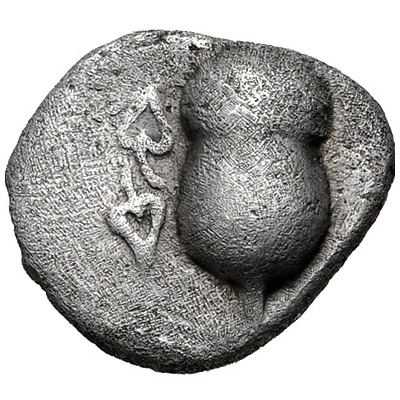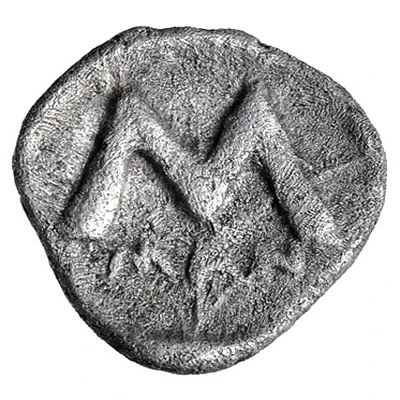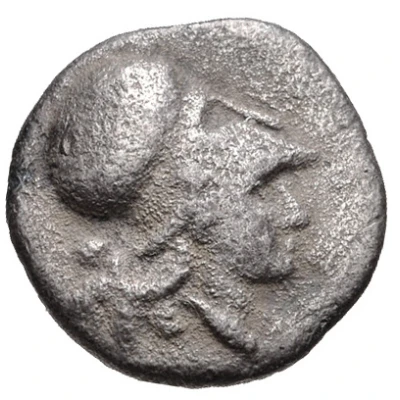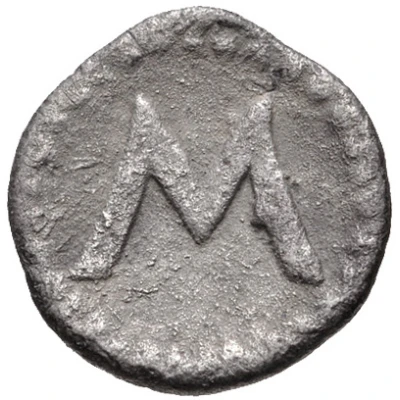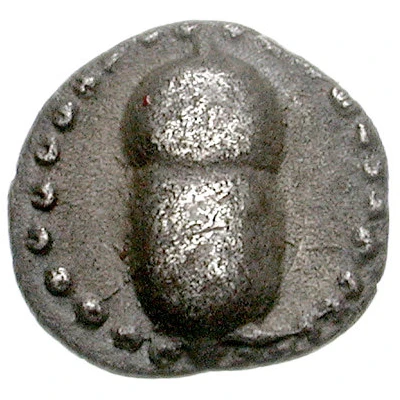
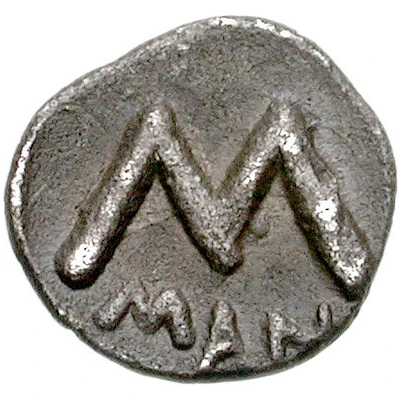

© Classical Numismatic Group, Inc.
Obol 420 BC - 385 BC
| Silver | 0.89 g | 10.0 mm |
| Issuer | Mantinea (Arkadia) |
|---|---|
| Type | Standard circulation coin |
| Years | 420 BC - 385 BC |
| Value | Obol (⅙) |
| Currency | Drachm |
| Composition | Silver |
| Weight | 0.89 g |
| Diameter | 10.0 mm |
| Shape | Round (irregular) |
| Technique | Hammered |
| Demonetized | Yes |
| Updated | 2024-10-09 |
| Numista | N#144670 |
|---|---|
| Rarity index | 100% |
Reverse
Large M with inscription MAN below
Script: Greek
Lettering: ΜΑN
Comment
Traité III, 959.
Interesting fact
The Obol coin from Mantinea (Arkadia) was used as a form of currency in ancient Greece during the 5th century BC. It was made of silver and weighed approximately 0.89 grams. Despite its small size, the Obol was an important coin in ancient Greece, as it was widely used for trade and commerce. In fact, the Obol was the standard unit of currency in many ancient Greek city-states, including Athens. Its value was equivalent to one-sixth of a drachma, which was the standard unit of currency in ancient Greece. The Obol coin from Mantinea (Arkadia) is a rare and valuable artifact that provides insight into the economic and trade practices of ancient Greece.
